Country guides

Things to do in Bolivia
Home to ancient indigenous tribes and spellbinding biodiversity, Bolivia offers the thrill of the unbeaten track. Adventurous travellers will come alive in the country's wilderness, which has something for every bent. Indeed, visitors can brave the Amazon Basin's sticky heat, explore parched desert, or scale rugged mountains, packing coca leaves to remedy altitude sickness.
Lake Titicaca is a must for nature lovers. So too is the breath-taking Salar de Uyuni: the world's largest salt flat. The Eduardo Avaroa Andean Fauna National Reserve is full of otherworldly landscapes.
History buffs will enjoy the Spanish colonial town of Sucre, and exposure to the country's tribes, who still live as they have for centuries. The terror-inducing Yungus Road is another of the destination's gems, and is known as the world's most dangerous road.
On a cautionary note, travellers should plan their itineraries with Bolivia's lack of infrastructure in mind. Tourists generally have a richer experience by visiting one or two interesting regions, instead of trying to see more in a single trip.
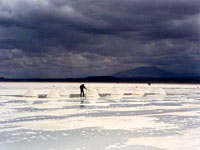
Salar de Uyuni
Salar de Uyuni is the world's largest salt flat, which exists courtesy of a prehistoric lake that went dry. This region is one of Bolivia's most spectacular natural attractions, an…
Salar de Uyuni
Salar de Uyuni is the world's largest salt flat, which exists courtesy of a prehistoric lake that went dry. This region is one of Bolivia's most spectacular natural attractions, and is a photographer's delight. Its surreal landscape combines salt pans, wandering llamas and wind-eroded rock formations. A landmass covered in towering cacti called, Isla de Pescadores (the Pescadores Islands), lies in the middle. Laguna Colorada and Laguna Verde are other isolated marvels in Salar de Uyuni. One is a fiery-red lake; the other is a deep blue. Both are inhabited by flamingos and surrounded by extinct volcanoes. Nearby Sol de Manana reeks of sulphurous gases from geysers, fumaroles and bubbling mud-pools. The village of Uyuni is located to the southeast of the Salar, and is the best base from which to explore the area. Travellers can arrange tours from there. 'Salt Hotels' around the periphery of Salar are a unique form of accommodation, where everything (walls, furniture, etc.) is made from salt blocks cut from the flats.
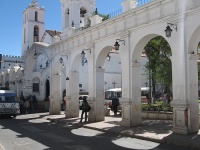
Sucre
The picturesque destination is known as a university city, home to San Francisco Xavier University. Founded in 1624, the institution is one of the oldest seats of learning in the A…
Sucre
The picturesque destination is known as a university city, home to San Francisco Xavier University. Founded in 1624, the institution is one of the oldest seats of learning in the Americas. Visitors will also find great bars, museums and restaurants, as well as shopping and nightlife. The small city is easy to get around and travellers will enjoy seeing the sights on foot, its white colonial buildings with red-tiled roofs and characteristic balconies capturing the essence of Bolivia's Spanish era. Tourists can visit the Casa de la Libertad on the main plaza, which was where Simon Bolivar signed the declaration of independence in 1825, or marvel at the renaissance, baroque and Andean Baroque architecture of La Catedral.
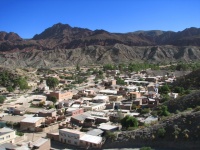
Tupiza
Located in Potosi Department, Tupiza mining town serves as a popular base for tours of nearby San Vicente, which is the region's major drawcard. San Vicente's 'Wild West' history f…
Tupiza
Located in Potosi Department, Tupiza mining town serves as a popular base for tours of nearby San Vicente, which is the region's major drawcard. San Vicente's 'Wild West' history features Butch Cassidy and the Sundance Kid: two of the world's most famous outlaws. Both of them died in Tupiza after fleeing the US in 1901. They were gunned down by the Bolivian army. Organised tours from Tupiza lead tourists along the 'death trail' of Butch and Sundance, giving visitors the chance to follow the outlaws' last days. The trail leads all the way to their supposed final resting place.
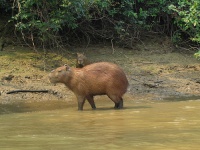
Rurrenabaque
Rurrenabaque is one of the main starting points for eco-tours to the Amazonian jungle and pampas. Perched between the surrounding jungle and the River Beni, this little frontier se…
Rurrenabaque
Rurrenabaque is one of the main starting points for eco-tours to the Amazonian jungle and pampas. Perched between the surrounding jungle and the River Beni, this little frontier settlement is the loveliest of Bolivia's lowland villages. Many holidaymakers come to explore the nearby Madidi National Park and Pampas, which are home to caimans, macaws, monkeys, turtles, piranhas, pink dolphins, anacondas and capybaras (the world's largest rodents). Visitors can also take dugout canoes down the river or simply enjoy the rainforest's immense biodiversity. The terrain varies from mountain cloud forest to savannah.
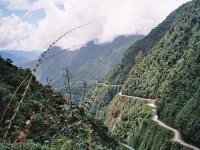
Yungas Road
Yungas Road is not an attraction for the faint of heart. Dubbed the 'El Camino de la Muerte' (Road of Death), it stretches between La Paz and Coroica and claimed 200 to 300 lives e…
Yungas Road
Yungas Road is not an attraction for the faint of heart. Dubbed the 'El Camino de la Muerte' (Road of Death), it stretches between La Paz and Coroica and claimed 200 to 300 lives every year until 1994. Paraguayan prisoners built the road during the 1930s Chaco War, and it has extreme drops of up to 2,000 feet (609m). The Yungas Road has since become a popular tourist destination among thrill seekers, particularly mountain bikers. It remains dangerous, though, and trucks have serious problems passing each other. Crosses dot the road and mark where cars have plunged off the steep cliff. Drivers on Yungas Road must obey a strict set of rules, as rain and fog often reduce visibility and there are no guard rails. Contrary to normal Bolivian driving rules, drivers keep to the left, and uphill vehicles always have the right of way. Yungas Road has been upgraded with many new safety measures in the last decade, but the original route, now called North Yungas Road, is still in use by tourists.
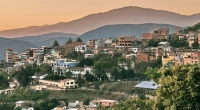
Coroico
Coroico is a relaxing, low-altitude spot where visitors can escape frigid highland nights. The trip from La Paz traverses the Yungas Road, which makes for a photogenic and adrenali…
Coroico
Coroico is a relaxing, low-altitude spot where visitors can escape frigid highland nights. The trip from La Paz traverses the Yungas Road, which makes for a photogenic and adrenalin-charged entrance into this laid-back resort town. Perched atop the peak of Cerro Uchumachi, Coroico offers gorgeous views of orchards, forested canyons, cloud-covered mountain tops, and the snow-capped peaks of the Cordillera Real. Coroico is a good base for some interesting hikes into the jungle and for mountain-biking trips into the local area, including guided descents of the precipitous highway.
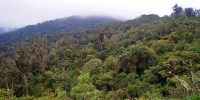
Amboro National Park
Amboro National Park is a nature reserve in central Bolivia. Its wildlife population includes more than 800 species of birds, and many endangered animals such as the puma, jaguar a…
Amboro National Park
Amboro National Park is a nature reserve in central Bolivia. Its wildlife population includes more than 800 species of birds, and many endangered animals such as the puma, jaguar and spectacled bear. Hikers will encounter a diverse terrain, which covers the northern Chaco, Andes foothills, and Amazon Basin. The region's spectacular scenery features canyons, forests, mountains, rivers, and waterfalls. Visitors can pass the time birdwatching at La Chonta outlook, sunning themselves on the beaches of the Surutu River, or hiking the Yungas Mountains. Getting to the park is relatively easy, given that it's only around 93 miles (150km) northwest of Santa Cruz de la Sierra. A number of tour operators offer outings to Amboro and a range of activities in the park.
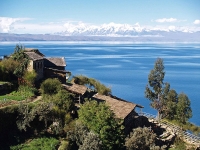
Lake Titicaca
Lake Titicaca is the biggest in South America, and is one of the highest on the planet. Deep and enormous, it borders Bolivia and Peru and sits between Andean mountain ranges. More…
Lake Titicaca
Lake Titicaca is the biggest in South America, and is one of the highest on the planet. Deep and enormous, it borders Bolivia and Peru and sits between Andean mountain ranges. More than 25 rivers flow into the lake, with some 41 islands breaking through the surface of this majestic freshwater giant. Interestingly, the Uros people live on around 62 floating islands made entirely from reeds, and are a must on any trip to Titicaca. Near the southern shore lies the ruins of Tiahuanaco, seen as a remnant of a major pre-Incan civilisation with enigmatic temples and intriguing monoliths.


